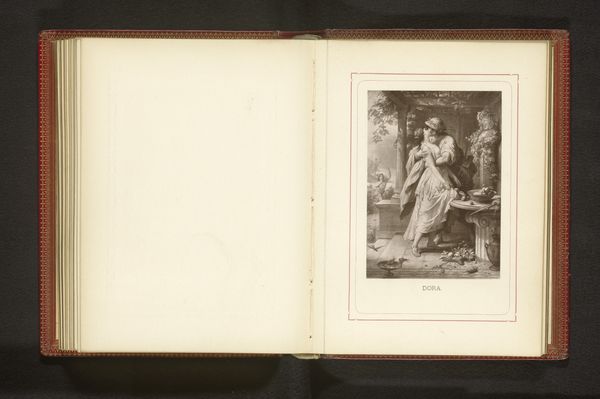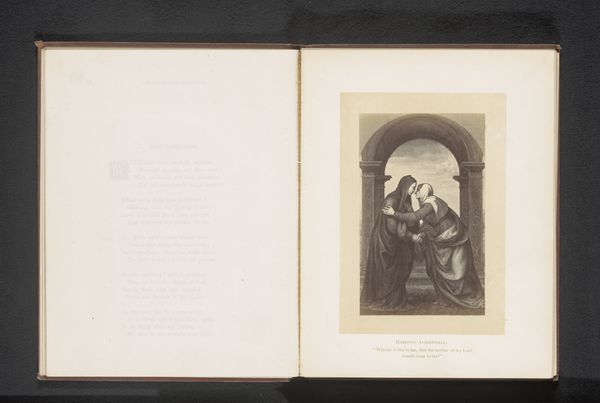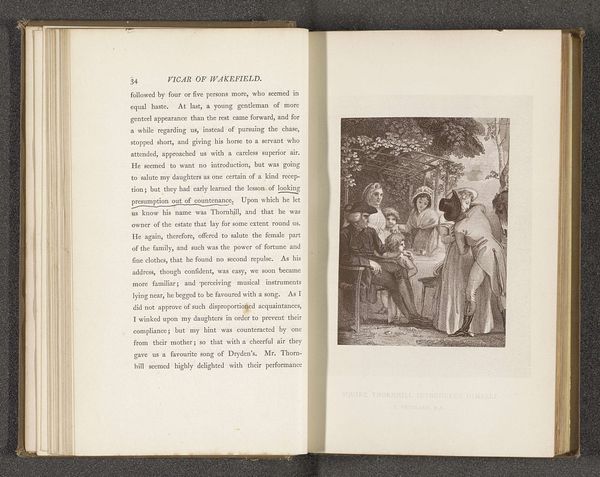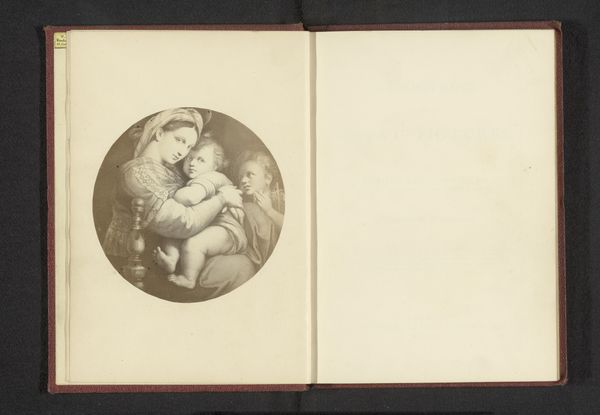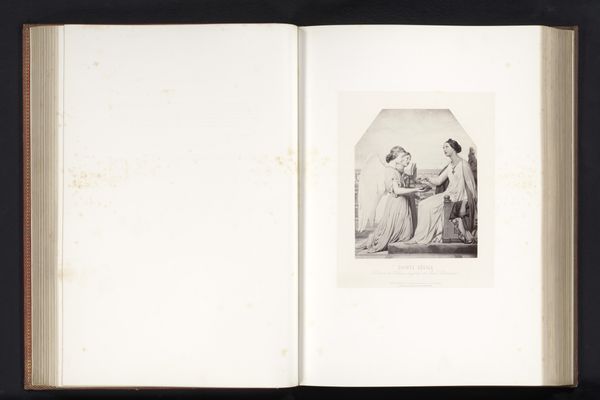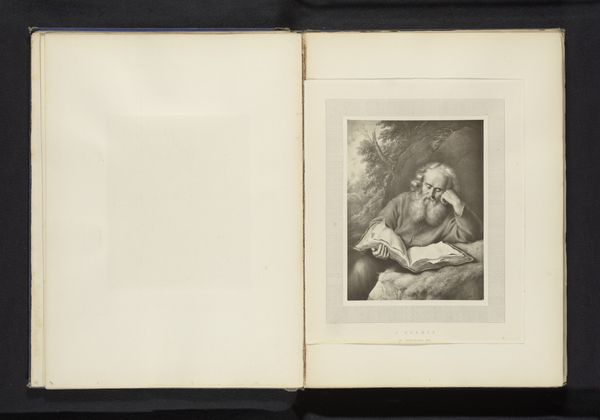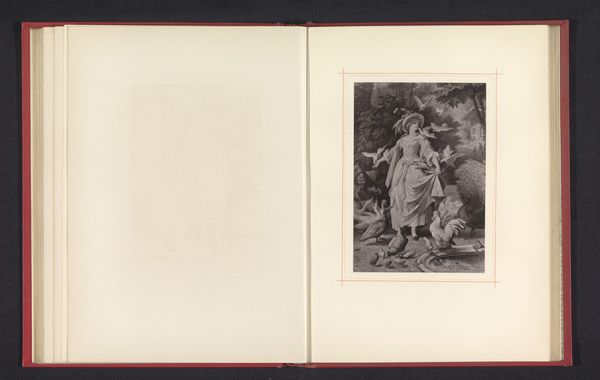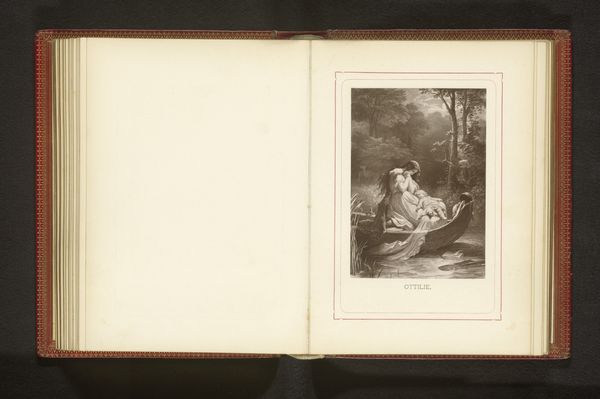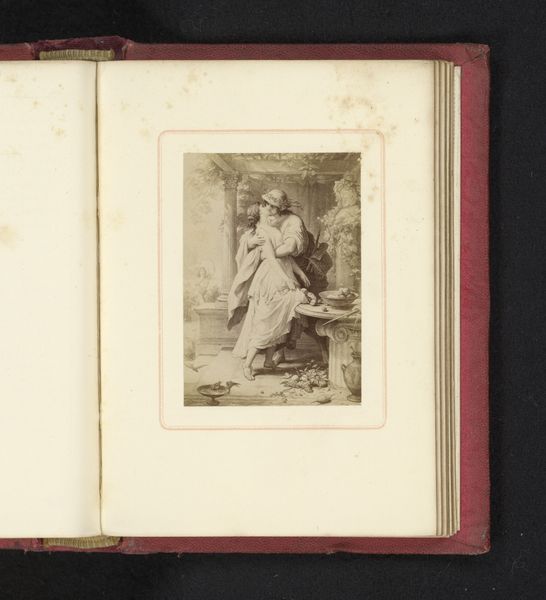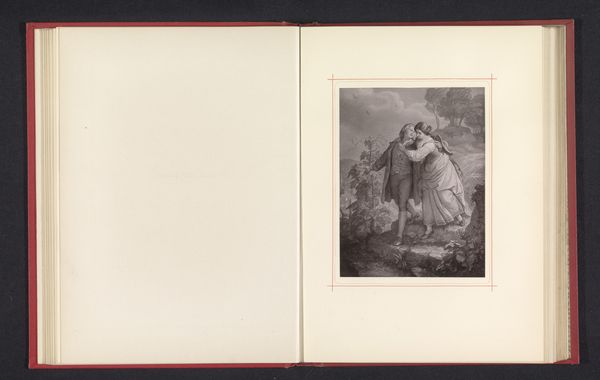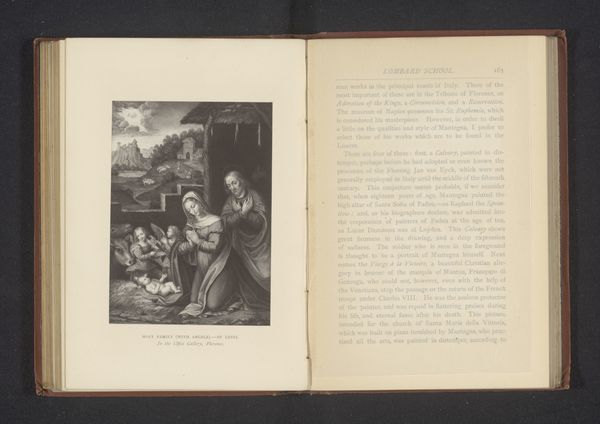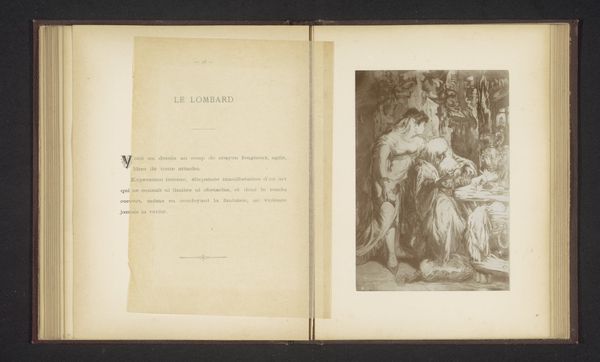
Fotoreproductie van een prent naar een schilderij, voorstellende Maria met Kind en Jozef before 1871
0:00
0:00
print, photography
#
portrait
# print
#
11_renaissance
#
photography
#
coloured pencil
Dimensions: height 126 mm, width 80 mm
Copyright: Rijks Museum: Open Domain
Editor: This photogravure, a reproduction of an older painting, depicts Mary, the Christ Child, and Joseph. It's held at the Rijksmuseum and is dated before 1871. Immediately, the soft, sepia tones give the scene a timeless quality. Almost dreamlike. Curator: Yes, that tonality certainly impacts our reading of the image, particularly in relation to the arrangement of the figures within the pictorial frame. The artist has created an arcing effect over the Virgin and Child using tree branches, mirroring the internal architecture of Renaissance paintings and emphasizing their importance. Editor: Beyond the art historical nods, that visual cradle also evokes a sense of protection, doesn't it? The motif of the Madonna and Child is, of course, incredibly powerful, laden with centuries of artistic, theological, and emotional significance. Joseph observing from the background... it feels both intimate and somehow distant. Curator: Distant yet crucial! His positioning within the image, set slightly behind and to the side, creates an intriguing triangular composition that locks the subjects together with this interplay of foregrounding and receding. But that photographic "filter" that has become imposed on the work does complicate interpretation, particularly when the work presents as a modern re-iteration or appropriation. Editor: I think it adds another layer. It invites the viewer to reflect on how we revere iconic images, continually recreating and reinterpreting them across generations. We bring the past into the present through constant re-examination. I am also aware, looking again at the details, that the sepia tones used, bring to mind, perhaps unintentionally, Victorian era mourning photography. Curator: That may have altered your response to its texture. It highlights how changes in material processes can radically transform the semantic interpretation of an artwork, regardless of its representational content. We must keep this in mind for sure. Editor: Indeed, each era seems destined to leave its imprint on how we perceive even the most sacred narratives. Thanks for pointing out those intricate relationships of interpretation, by focusing not just on symbolism, but construction, framing, materiality itself. Curator: Of course! The image asks to be both considered and questioned on these very visual and conceptual levels.
Comments
No comments
Be the first to comment and join the conversation on the ultimate creative platform.
